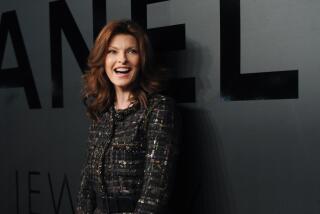Sibling’s Cancer Death Puts Sisters on the Alert
- Share via
ESTES PARK, Colo. — For four years, Sheila Modeland Gilchrist woke up in the night worrying about her sister Jan, who was battling breast cancer and losing.
Three weeks after her sister’s death, Sheila woke up again at 3 a.m., suddenly realizing that it was time to worry about herself.
As siblings of a breast cancer victim, Sheila and her three surviving sisters--ages 34 to 41--became high-risk candidates for the disease, which strikes one of every nine women, according to the American Cancer Society.
Sheila’s odds now are two to three times that, doctors say.
“All our energies and attention were focused on Jan, none of it on ourselves and our own risks,” Sheila said. “Now we have to switch gears, concentrate on our own health. You never think it will happen to you. But it happened to Jan.”
Jan Modeland, 38, died last October after a marathon struggle to beat bad odds.
Sheila, 37, of Alva, Okla.; Joy Modeland Minton, 34, of Enid, Okla.; Julie Modeland Fuson, 35, of Rockwall, Tex., and Gloria Modeland Winter, 41, of Hillsboro, Kan., all say their heightened breast cancer odds have irrevocably changed their daily lives.
Scrupulous self-examination, frequent checkups and strict adherence to scheduled mammograms now are part of their routine. They have cut back on red meat and fatty foods, kept themselves trim with healthy eating and exercise, and read everything they can find about breast cancer. They attend lectures and symposiums about the disease, seek out experts and share notes.
“I have to be in charge of my body,” Julie said. “It’s not up to my doctor, it’s up to me to remember to get my mammogram, to compare X-rays from year to year, to make sure a qualified technician reads them.
“And instead of going once a year, which is the recommended standard, I get a mammogram every six months. It makes me feel better, and that is important too.”
Sheila also has added a “dreaded diseases” rider to the family’s insurance policy because “we have seen firsthand how people can get totally wiped out financially when cancer strikes.” Hers is the only insurance company that pays for annual mammograms--and it covers only half the cost of the procedure.
Because Jan Modeland was the first woman in her family known to have breast cancer, no hereditary link has been established. But researchers believe that the younger a woman is diagnosed, the greater the chance the disease was passed down from generation to generation, probably through the maternal side of the family.
Although all of Jan’s sisters say it is still too early to even contemplate such action, some women who have lost female relatives to breast cancer are voluntarily having their healthy breasts removed.
The gynecologist who treats Sheila and Joy already has made her decision.
“I went ahead with the prophylactic mastectomy because it gave me greater peace of mind,” said Dr. Elaine Neill Davis of Enid, Okla., who had her healthy right breast removed after cancer was found in her left breast.
“I didn’t want to worry about getting cancer in the other breast. That was my choice. Some women make it, others do not,” said Davis, 55.
“Will we consider prophylactic mastectomies? I don’t know,” Sheila said. “I haven’t had time to think about it, but at some point, I suppose we will all have to think about it. We know now that breast cancer is a disease we will live with, one way or another, for the rest of our lives.”
More to Read
Sign up for Essential California
The most important California stories and recommendations in your inbox every morning.
You may occasionally receive promotional content from the Los Angeles Times.













